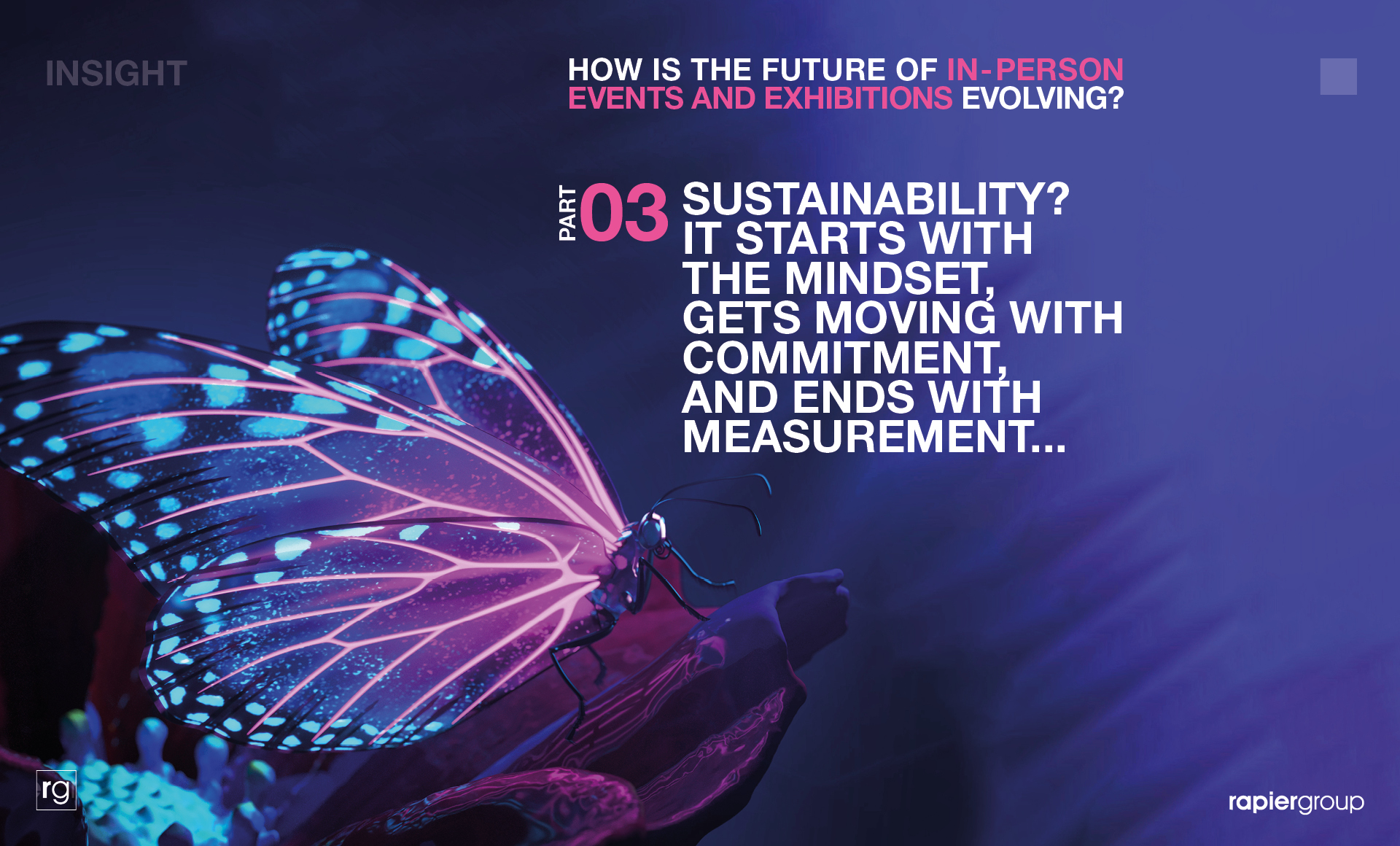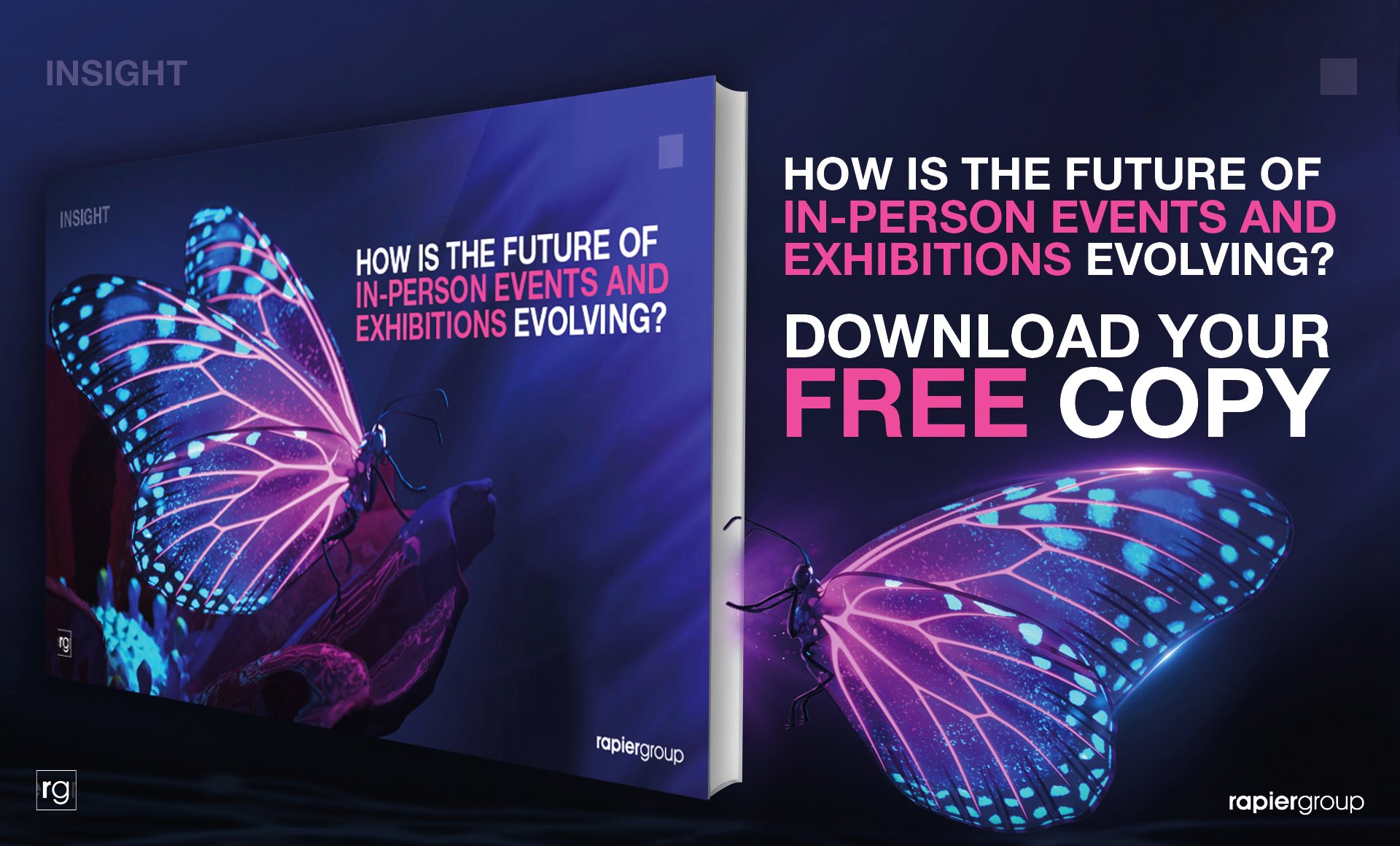
This blog post is Part 3 of a four part series - you can download the whole guide here
Let’s now focus on sustainability and its measurement. It’s a big challenge, so where do we start?
Should we start by measuring what has been done before? Not a bad idea, as it provides a benchmark for improvement; but measuring historical activities is not straightforward. It can be done, and many independent entities can help you with it, but it takes time and money.
If that isn’t viable for you, then let’s deal with the present. It’s better to be doing something now and for the future than to do nothing, which is no longer an option. If you are a show organiser, then you really need to be thinking about what impact you are having on the environment, and what you can do to inspire, lead the way, and influence your community to bring about the right changes, with buy-in from everyone involved.
Acting now and doing something is far better than doing nothing. This is the start of a curve of change, and if we are realistic, change takes time, and will no doubt involve lessons being learned. But those lessons will only be learned from setting goals and taking steps in the first place. The goals may be unrealistic, but they will set you in the right direction, and even if they are not quite right at the first attempt, they will bring about more effective change in the future.
Technologies that help to measure sustainability are changing all the time. We may know a lot more in a year’s time than we know now. We need to keep an open mind, aim to do the right thing, and learn as we go.
Rapiergroup partnered with The Carbon Trust in 2020, to create a tool to compare the footprint of a delegate attending a global pharmaceutical congress virtually versus physically. The aim was to motivate affiliates to increase the number of invited virtual delegates to reduce the carbon impact, but also to increase reach and efficiency.
We calculated the 2020 impact as well as the projected impact for 2021: the reduction in CO2 emissions for virtual delegates compared with physical delegates, had the congresses been physical events.
We discovered the many advantages of going virtual, including reduced environmental impact, lower cost per engagement, the opportunity to extend engagement over a longer period, and the opportunity to reach a wider audience because of the removal of barriers such as cost, time, travel and childcare. The metrics show that virtual congresses across 2020 reached a younger audience, as well as higher proportions of women and healthcare professionals from less affluent countries.
As we transition to blended congress attendance, we have used these important learnings to reduce waste through our creative process for the physical space, focusing on spend and activation that drives education and engagement. In addition, we are cascading our learnings and sustainability targets throughout our supply chain to drive change for social value and an iterative-thinking approach.
This is the world we are getting more used to living in. It can be a bit scary, but we will look back at this time and see that we were brave in our attempts to make change for the better, and that what we did was right, even if the ultimate objectives weren’t all achieved immediately. It all starts with an open mindset, to achieve the right targets for the greater good.
Setting targets and communicating them starts momentum. It gets other people on board, and through collaboration and working collectively, good things will happen. Involving an independent third party can be a wise move to obtain credible validation that you can share as proof of your achievements.
When it comes to measurement, our advice is to keep things simple. It is difficult to quantify something like tonnes of CO2, but using measures such as the number of trees that need to be planted to offset what you are doing, or showing each tonne of landfill that will result from individual elements, adds a tangible reality that people can understand.
All of this helps people to make informed choices within the exhibit environment. Bringing in more digital technology and moving away from things like physical giveaways, are small steps that collectively add up to big overall results.
Whatever you do and achieve will be news that can be shared across the industry, educating and inspiring others. Here at Rapiergroup, we are working on large-scale projects for 2022 in which we and our clients are addressing everything we have talked about in this article.
Our plan is to share the outcome of these projects, in the hope that doing so will help others in our industry who are striving to achieve the same goals. And we look forward to other people doing the same, so that we can learn from them too!
There are still many unknowns and plenty of discoveries ahead of us, but at Rapiergroup we are completely focused on a sustainable future. We are committed to delivering carbon neutral projects for our clients by 2030.
But we are going to get there much sooner than that!
Enjoyed this first part?
Download the full guide: How is the future of in-person events and exhibitions evolving?
Subscribe and stay up to date
receive essential emails.




